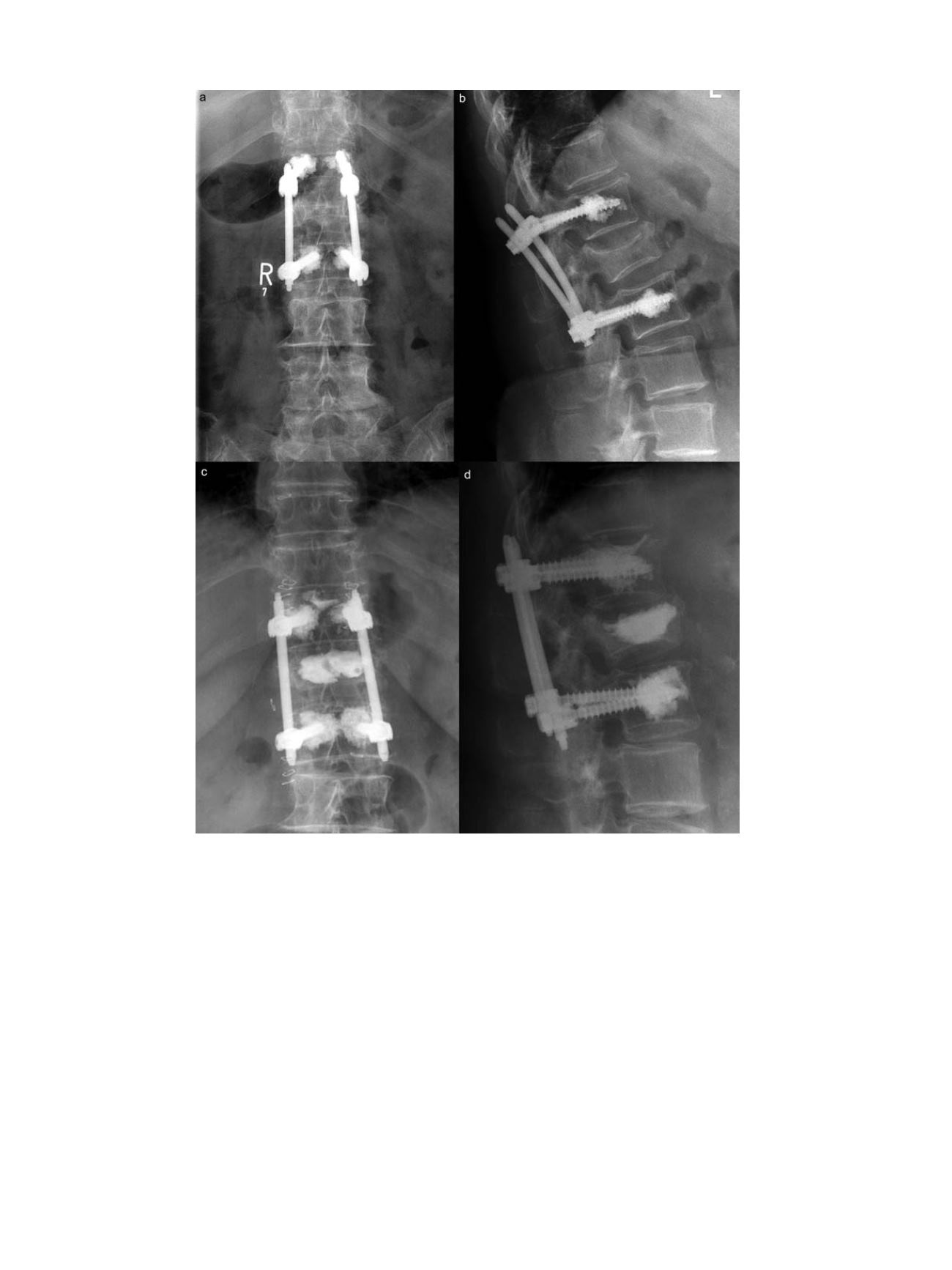

for cement augmentation include kyphoplasty and vertebroplasty.
In many cases a permanent stabilization of the malalignment is not
possible with cement augmentation alone, but requires additional
dorsal instrumentation. The literature supports the use of vertebro-
plasty in conjunction with pedicle screw-based instrumentation
(Figure 4) for treating more severe spinal deformities [97]. Anterior
approaches may provide another way of treatment, but only
few studies have been conducted on these implants in osteoporotic
bone [97].
In odontoid fractures there is still an ongoing discussion whether
they should be managed operatively or conservatively. In the
management of geriatric odontoid fractures, nonsurgical support
with a collar may be considered for the low-demand patient,
whereas surgical fixation is favored for high-demand patients [96].
In conclusion, the therapy of fractures in osteoporotic bone
primarily requires a multidisciplinary therapeutic acute care concept
for the elderly including treatment of co-morbidities and correct
choice, timing, and technique of the operative intervention. The
primary aim of operative treatment in elderly individuals is the
avoidance of immobilization of the patient. In individual cases
conservative treatment might be required. Secondary therapeutic
interventions involve early patient-related physical rehabilitation
focused on fall prevention and osteoporosis treatment. Integration of
patient
’
surrounding environment into this therapeutic concept is a
mandatory precondition for successful therapy of fragility fractures.
Generally, choice of treatment should be individualized and based
on the evaluation of patient-specific, fracture-specific and surgeon-
specific aspects.
Conflict of interest
The authors declare no conflict of interests.
Fig. 4.
Failure of fracture fixation of an osteoporotic AO/OTA type A3 of the first lumbar vertebrae (L1) in an 80-year-old female. Loss of reduction due to screw
“
cut-out.
”
Fracture fixation by dorsal internal fixation combined with augmentation of the pedicle screws. (a,b) Revised situation after dorsal percutaneous cement augmentation (kypho-
plasty) of the fractured vertebrae and dorsal reinstrumentation.
C. von Rüden, P. Augat / Injury, Int. J. Care Injured 47S2 (2016) S3
–
S10
S8


















